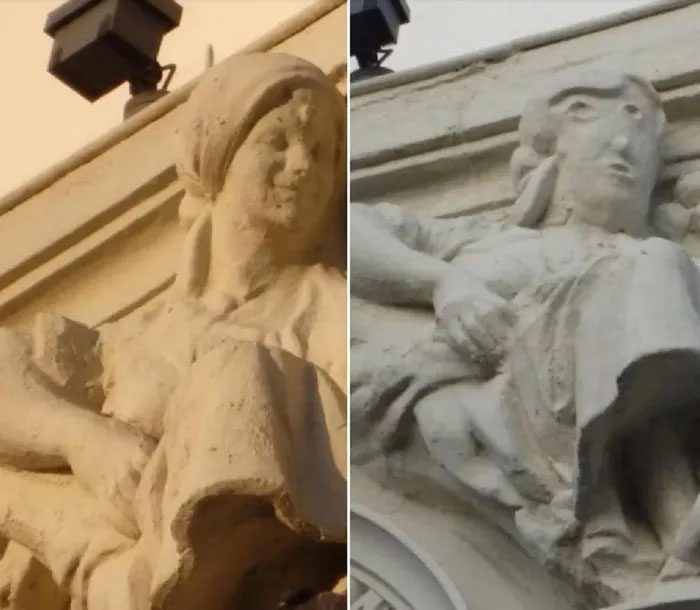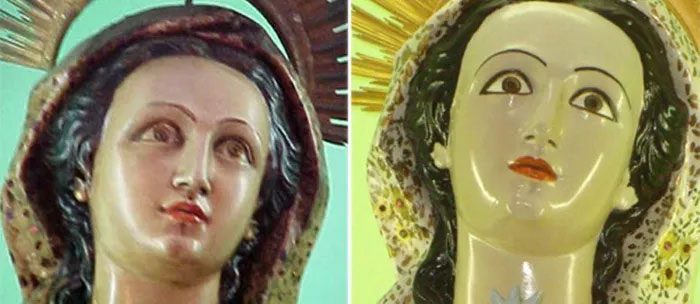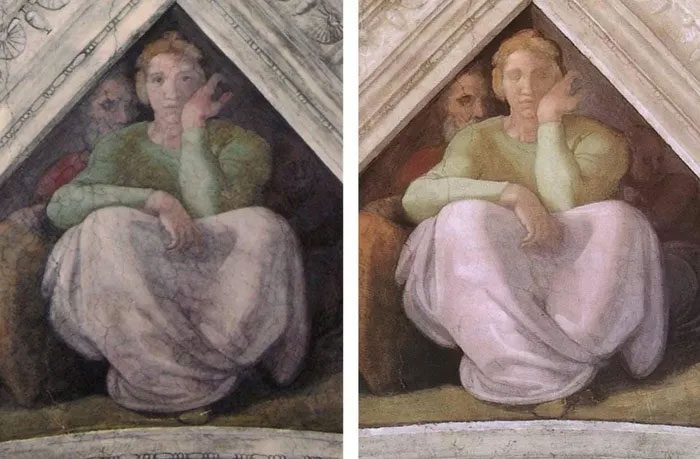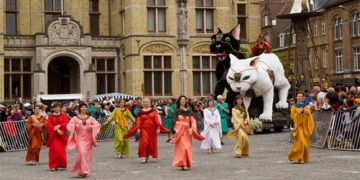The purpose of restoration and conservation is to preserve or recreate the original condition of an artwork against the wear of time or unwanted external influences. However, there are numerous instances where subsequent generations have damaged, distorted, or lost the value of the artwork in the process.
The Ecce Homo Mural
In the early 20th century, Spanish painter and professor Elías García Martínez created the artwork Ecce Homo, depicting Jesus Christ wearing a crown of thorns. The piece is a mural located in a church in the town of Borja, Spain.
The painting was not particularly remarkable until 2012, when parishioner Cecilia Gimenez, then 82 years old, decided to restore the artwork. Humidity on the wall caused some layers of paint to peel off.

After restoration, Ecce Homo became an internet meme. (Photo: FAZ).
The result was disastrous. Following this activity, the sparsely populated town and the restorer gained fame. The mural was altered to such an extent that it acquired other names, turning into the “Ecce Meme” trend on the internet, and the Borja government threatened to sue Cecilia.
The Smiling Statue in Spain
A statue in Palencia, Spain, was restored in 2020 to address weather damage accumulated over decades. Prominently displayed on the façade of a bank building on Calle Mayor since 1923, the Smiling Statue depicts a woman smiling amid surrounding livestock.
However, the restorer, whose identity remains unknown, distorted the statue’s face to the point that it was likened to a cartoon character.

The Smiling Statue was transformed into a ‘potato head’ after restoration. (Photo: Antonio Guzmán Capel).
This damaged piece, compared to a “potato head”, drew public attention through posts and photos on the social media account of an artist in Palencia. The Spanish Association of Professional Conservators and Restorers (ACRE) condemned this careless restoration.
Leonardo da Vinci’s “The Virgin and Child with St. Anne”
The restoration process of the painting The Virgin and Child with St. Anne by the master Leonardo da Vinci sparked a debate among art experts regarding the cleaning of old artworks.
The painting was acquired by King Francis I of France in 1518 and is currently displayed at the Louvre Museum. Like many other major art museums, the Louvre faces pressure to attract visitors with bright colors and outstanding masterpieces.
After restoration, Leonardo da Vinci’s painting “The Virgin and Child with St. Anne” appears significantly different from the original version. (Photo: Alamy, The Picture Art Collection).
During the cleaning of The Virgin and Child with St. Anne in 2010-2011 to remove dirt and restore faded colors, the painting’s colors became noticeably brighter. Many felt the artwork was altered excessively, leading to the resignation of two art experts in protest against the restoration oversight committee.
The Statue of Saint Barbara in Brazil
In Catholicism, Saint Barbara is the patron saint of miners and all who work with fire. However, the statue of the saint could not escape damage during the restoration process.
The statue in question is a 1.73-meter tall sculpture placed on the main altar of a church in Brazil. It was restored in 2011 for the Santa Barbara Day celebrations.

The statue of Saint Barbara appears to be ‘made-up’ after restoration. (Photo: Fajardoecalgam).
Although the results shocked most people, those responsible for the restoration insisted that the statue resembled the original sculpture.
The Sistine Chapel Ceiling
The Sistine Chapel ceiling is a masterpiece created by Michelangelo from 1508 to 1512. It is considered a foundational work of Renaissance art. The restoration of the frescoes in this structure was one of the most significant restoration activities of the 20th century.

Jesse’s eyes disappeared after restoration. (Photo: Wikimedia Commons).
However, controversy arose when many parts of the great work were altered too much compared to the original version, even resulting in serious damage, such as the loss of Jesse’s eyes.
This occurred because restorers removed accumulated dirt from the frescoes, ultimately reaching deeper layers within, altering the restoration processes that Michelangelo himself had performed centuries prior.


















































